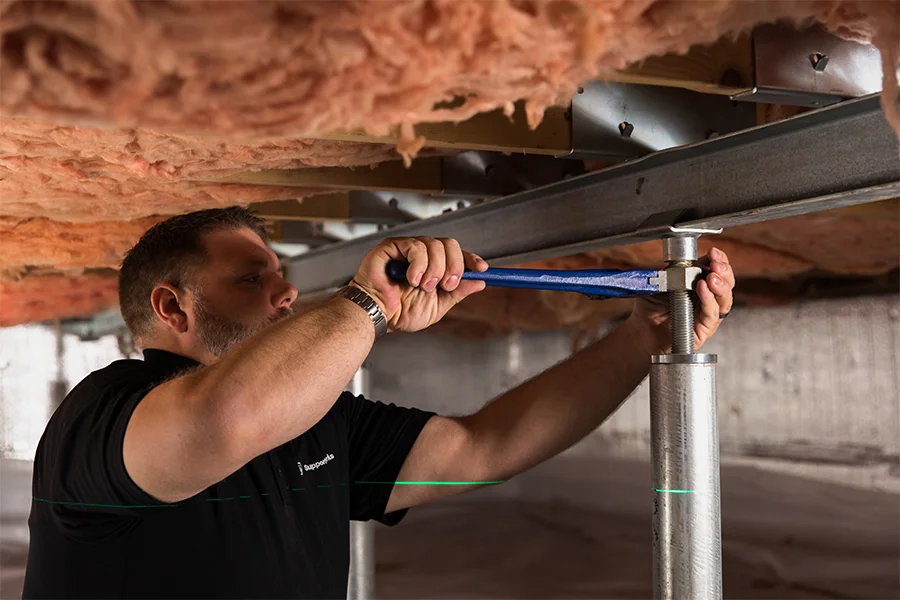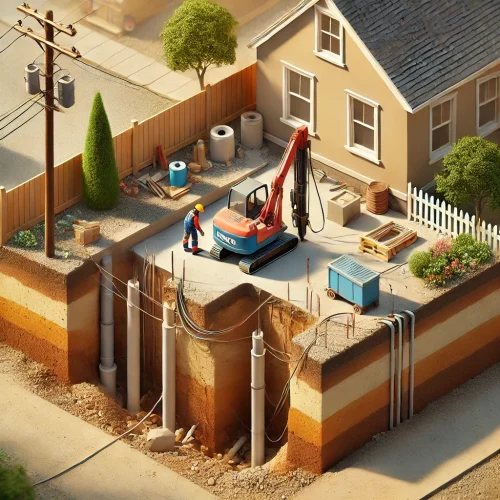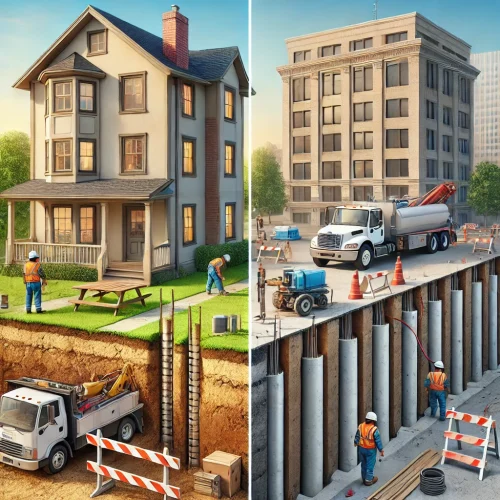
On average, foundation repair typically takes between one to three days. However, this is an average estimate that depends on the severity of the foundation damage and the specific repair method required. Here’s a breakdown of common scenarios:
- Small cracks or minor settling: These issues can often be addressed in one day, especially if the repair involves crack sealing or basic stabilization.
- Significant damage: Issues like bowing walls, extensive sinking, or severe settling may require several days or even weeks to fully repair.
In addition to the nature of the damage, other key factors influence the repair timeline, including:
- Size of the house: Larger foundations require more time, both for inspection and repair work.
- Access to the foundation: Limited access due to landscaping, utilities, or other structures can extend the timeline.
- Repair method: The type of repair, such as crack injection versus pier installation, greatly affects the time required.
- Extent of damage: The greater the structural damage, the longer the repair process.
In understanding the timeline, it’s essential to consider how these elements interact. For instance, a smaller home with easily accessible foundation issues might see faster repairs than a large home with obstructed access and extensive damage.
Can Foundation Repairs Be Done in One Day?

One-day foundation repairs are achievable, but they are generally reserved for minor issues. Small cracks, minor settling, or slight misalignments can often be managed within a single day, using less invasive techniques such as epoxy injection or polyurethane foam for sealing cracks.
However, it’s important to understand that this “quick fix” approach is only feasible under certain conditions:
- Limited Damage: When damage is minimal, like small cracks or isolated settling, a one-day repair can be sufficient to restore structural integrity.
- Simpler Repair Methods: Techniques such as crack sealing or leveling with lightweight injections are often fast procedures, requiring less labor and equipment.
For more complex foundation issues, especially those impacting the structural stability of a property, a longer timeframe is needed. One-day repairs may be sufficient to prevent immediate issues but may not provide a long-term solution for extensive problems.
Foundation Repair Timeline
Understanding the factors influencing foundation repair time can help property owners better plan for the process. Here are some of the primary considerations:
Type of Foundation Repair Method

Different repair methods come with different time requirements:
- Epoxy or Polyurethane Crack Injection: Typically completed within a single day, this method involves injecting materials to seal and strengthen small cracks.
- Slab Jacking: Used to lift sunken foundations, this method involves injecting a concrete-like mixture under the foundation, taking one to three days, depending on the amount of settling.
- Pier Installation (Steel or Helical Piers): Often the go-to solution for significant settling or shifting. Installation of piers requires excavation and can take from several days to over a week, depending on the number of piers and their depth.
Severity of Foundation Damage

The extent of damage is a major time factor. For example:
- Minor Cracks: Small, surface-level cracks can often be repaired in a day, especially if the goal is simply to prevent water infiltration.
- Structural Damage: When foundation walls bow, large portions of the foundation need reinforcement, or there’s significant sinking, these issues demand more time. Structural repairs generally span multiple days, as the work involves heavy equipment, excavation, and thorough inspections.
Accessibility and Site Conditions

Access to the foundation impacts the repair timeline significantly. Houses with complex landscaping, obstructed crawl spaces, or utilities running close to the foundation might require additional work to gain full access, thereby extending the timeline.
- Obstacles: If excavation is required but limited by landscaping, utilities, or other structures, repair contractors will need to spend more time and care during excavation.
- Soil Conditions: Different soil types affect the repair process. For instance, clay soils can shift more unpredictably, sometimes requiring deeper piers, while sandy soils may necessitate additional reinforcement.
Residential vs. Commercial Foundation Repairs

The scope of foundation repairs can differ significantly between residential and commercial buildings. Residential repairs, particularly in single-family homes, are often simpler and can be completed faster than commercial projects, which might involve larger structures, additional permits, and more complex foundation systems. In some commercial scenarios, repairs might take weeks, especially if repairs need to be scheduled around business hours to minimize disruption.
The Importance of Choosing the Right Foundation Repair Contractors

Selecting experienced and qualified foundation repair contractors is essential for ensuring timely and effective repairs. Skilled contractors will:
- Assess and diagnose accurately: An accurate diagnosis is crucial to determining the correct repair approach and timeline.
- Plan around unique project factors: Every foundation is unique. Professionals understand the nuances, whether it’s adjusting to access challenges or considering local soil conditions.
- Provide an honest timeline: Trusted contractors set realistic timelines based on a thorough understanding of the problem rather than giving overly optimistic estimates.
Conclusion
Ultimately, while a one-day repair is possible for minor issues, it is not the norm for most foundation problems. Repair times vary based on factors such as the extent of the damage, repair methods used, site conditions, and foundation accessibility.
